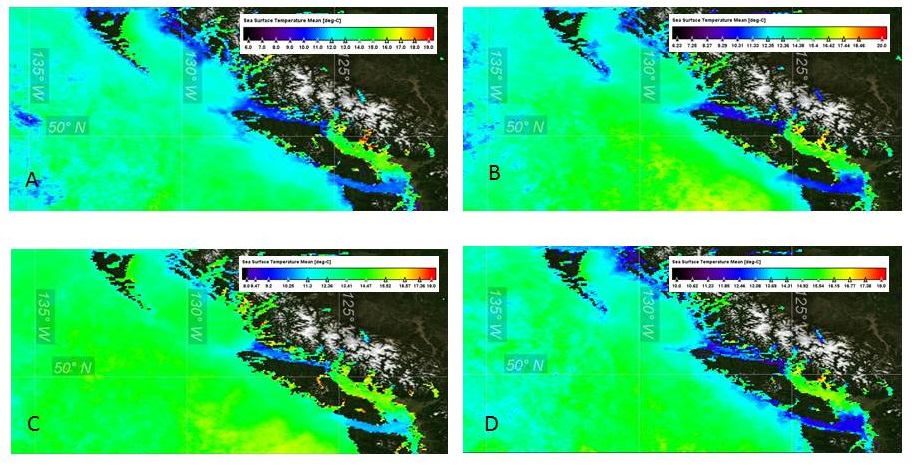Recent research into coastal sea surface temperature (SST) trends undertaken by Professor Carl Amos have revealed trends that are up to 10 times greater than the global average reported by the IPCC (2013). Research has been carried out in the northern Arabian Gulf (Kuwait), in the northern Adriatic (Venice lagoon), and off the British Columbian (BC) coast by the coastal group. Consistently high rates of temperature increase have been found almost everywhere. Much of this increase appears to be driven by coastal urbanization and changes in land practise which is causing river water to increase in temperature at rates perhaps greater than that of the coastal waters. This is clear in southern BC where the influence of urbanization and changes in land practise (deforestation) has led to warming of the Straits of Georgia during summer months. The work in BC has recently been published in the Journal of Coastal research
(http://www.jcronline.org/doi/abs/10.2112/JCOASTRES-D-14-00114.1?ai=18nt&ui=cpnn&af=T). Results show that parts of the southern region are warming at rates higher than 0.5oC/decade. Figure 1 shows the summer (monthly averaged) SST for the BC coastal region. Hot spots in the imagery correspond to coastal regions of intense urban activity. This has resulted in major shifts in species as a result.
Figure 1 Sea surface temperature (monthly average) for the West Coast of Canada taken by MODIS (Aqua, from http://oceancolor.gsfc.nasa.gov). (A) summer 2009; (B) summer 2010; (C) summer 2011; and (D) summer 2012.
Work on SST in the Arabian Gulf has been ongoing for about 8 years through a series of PhD projects. The original work published by Al Rashidi et al. (2009) showed that the northern Gulf has been warming at 0.6oC/decade, and that this warming trend is continuing today causing local waters to peak at 37oC during summer months. This has resulted in fish kills, coral bleaching, and seagrass displacement. The warming is in large part caused by the thermal plumes from coastal cities, coastal power plants and more recently due to the rapid growth in desalination plants.
Our present work is related to the relationship of SST and the red tides of the Gulf, and the possible links to coral bleaching of the red tides. This work is being undertaken in conjunction with the NY University (Abu Dhabi).
We are also working with ISMAR (Venice) on the impact of urbanization on SST in Venice lagoon. The city of Venice now receives about 22 million tourists annually (compared with about 4 million in the 1990’s). There is clear evidence of local heating of the lagoon, but it is yet unclear if the effect is more broad-scale in the lagoon. SST is critical to the sustained fisheries of the Venice region which generates about 50% as much income as tourism and employs about 30,000 people around the lagoon. There is also the possibility that the MOSE scheme (due for completion in 2016) will exasperate this problem if closed to prevent flooding.
The work continues and a series of papers are planned for the near future to present the findings of our work.
Al-Rashidi, T.B.; El-Gamily, H.I.; Amos, C.L. and Rakha, K.A., 2009. Sea surface
temperature trends in Kuwait Bay, Arabian Gulf. Natural Hazards, 50, 73-82.
International Panel on Climate Change., 2013. Climate Change 2013. The Physical
Science Basis. (https://www.ipcc.ch/report/ar5/wg1/).
